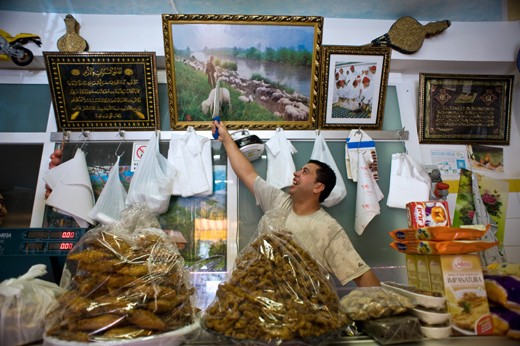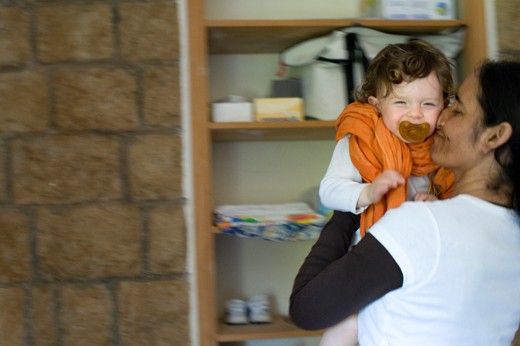ver the last decade the European Union has faced a strong growth of immigration that the global economic crisis has slowed but not stopped. In 2009, the latest year for which aggregated data are available, authorities of the 27 member states granted a total of two million new residence permits, a quarter of which were for working purposes. Therefore, the need for foreign labour in Europe remains structural and, as weak and slow the recovery may be, the demand for immigrant workers is deemed to increase, at least as a result of the native population ageing.
However this general trend takes many different forms at national level. The relationship of each European country with immigration, and labour migration in particular, is strongly marked by specific historical, economic and political factors. In the decade preceding the crisis, the Mediterranean countries, on the one hand, the United Kingdom and Ireland on the other, have emerged as the main poles of attraction. At the same time, the traditional immigration countries of continental Europe have experienced much more moderate migration trends, partly because of more cautious and restrictive political approaches. In the new member countries of Eastern Europe a spectrum of various situations has been observed, both with respect to the dynamics of migration and to the policy responses that have been adopted.
In this varied landscape, one of the few common features is the dissatisfaction with the policies adopted – an attitude expressed in different forms and for different reasons by the public opinion, experts, employers and migrants themselves. None of the approaches and technical solutions implemented at the national level stand strongly for their effectiveness and efficiency, nor for the degree of consensus they have achieved. Some of the countries that adopted a more open approach have been among those most hit by the economic crisis and are now undertaking significant immigration and labour market reforms, such as the United Kingdom and Spain. In countries that opposed major obstacles to large-scale labour immigration, such as Germany, the pressure for liberalization, particularly from the business sector, is increasingly intense.
As for the European institutions, despite their wide-ranging institutional competencies, their effective involvement in the field of legal immigration for working purposes remains limited. Indeed, Member States remain unconvinced of the usefulness of more substantial power-sharing in this policy area.n such strategic impasse, comparative research can bring to the debate some concrete and useful insight. This is the basic assumption of the three-year project “LAB-MIG-GOV: Which labour migration governance for a more dynamic and inclusive Europe?”, launched in 2011 under the programme “Europe and Global Challenges”, promoted and supported by a pool of European Foundations (Compagnia di San Paolo, Riksbankens Jubileumsfond, VolkswagenStiftung). As lead organization, FIERI coordinates an international team of early-mid career researchers based in five European countries (Italy, France, Germany, United Kingdom and Spain), with the addition of Morocco. Other important partners in the project are the European Policy Centre (EPC) in Brussels and the International Training Centre of the International Labour Organization (ILO-ITC) in Turin.
The theoretical and methodological approach of LAB-MIG-GOV is innovative in two main ways. First, because of its strong emphasis on the multi-level nature of labour migration regulation and management. Our analysis of national case studies is based on the interaction between the existing levels of governance: the national level (including in some contexts the role of sub-national institutions), the European level and the international level (including migration management initiatives carried out in partnership with countries of origin).
A second innovative and specific aspect of LAB-MIG-GOV is to consider not only policies on labour migration stricto sensu (defined as policies regulating the admission of third-country nationals for working purposes), but also the analysis of other policies that specifically affect the supply of foreign labour, such as a) the regulation of access to the labour market of family migrants, refugees or asylum seekers and international students; b) the management of transitional periods in the early stages of EU enlargements, i.e. the choice of granting to nationals of new member states access to the labour market; c) the regularizations of irregular migrant workers; d) the liberalization of international intermediation services managed by private employment agencies.
Starting from the key research question “Which labour migration governance for a more dynamic and inclusive Europe?”, the project will analyze the experience so far and explore new solutions through a combination of public policy analysis and quantitative research on the impact of migration policies on the inclusion of migrant workers in national labour markets. LAB-MIG-GOV has two overarching goals:
a) To produce a detailed and dynamic analysis of the structure and functioning of European governance in the field of labour migration (also through analytical monitoring of its possible evolution in the post-crisis phase);
b) To suggest strategies and solutions that the different actors involved at the various levels considered could enact in the medium and long term in order to strengthen the effectiveness of migration policies with respect to goals of economic dynamism and social cohesion.
The research will be articulated in 5 different work packages:
• WP1: Comparing national policies on labour migration in 6 countries (France, Germany, Italy, Spain, UK and Sweden)
• WP2: Analysing the evolution of EU policies on labour migration
• WP3: Mapping sending states’ perspectives and strategies in the field of labour migration (with Morocco as the main case-study)
• WP4: Drawing lessons for policy-making from quantitative research on labour market insertion of immigrants
• WP5: Networking and dissemination of results.






